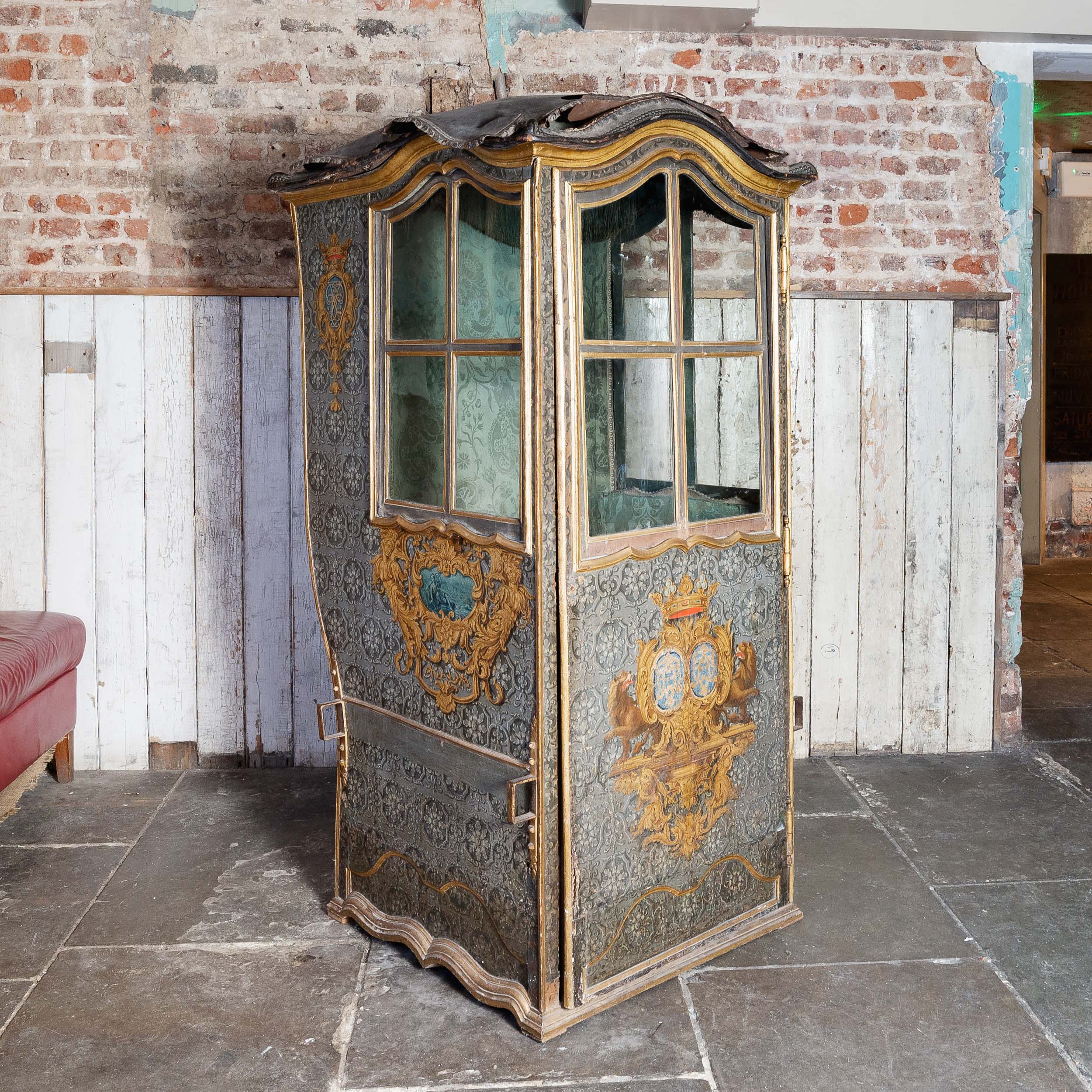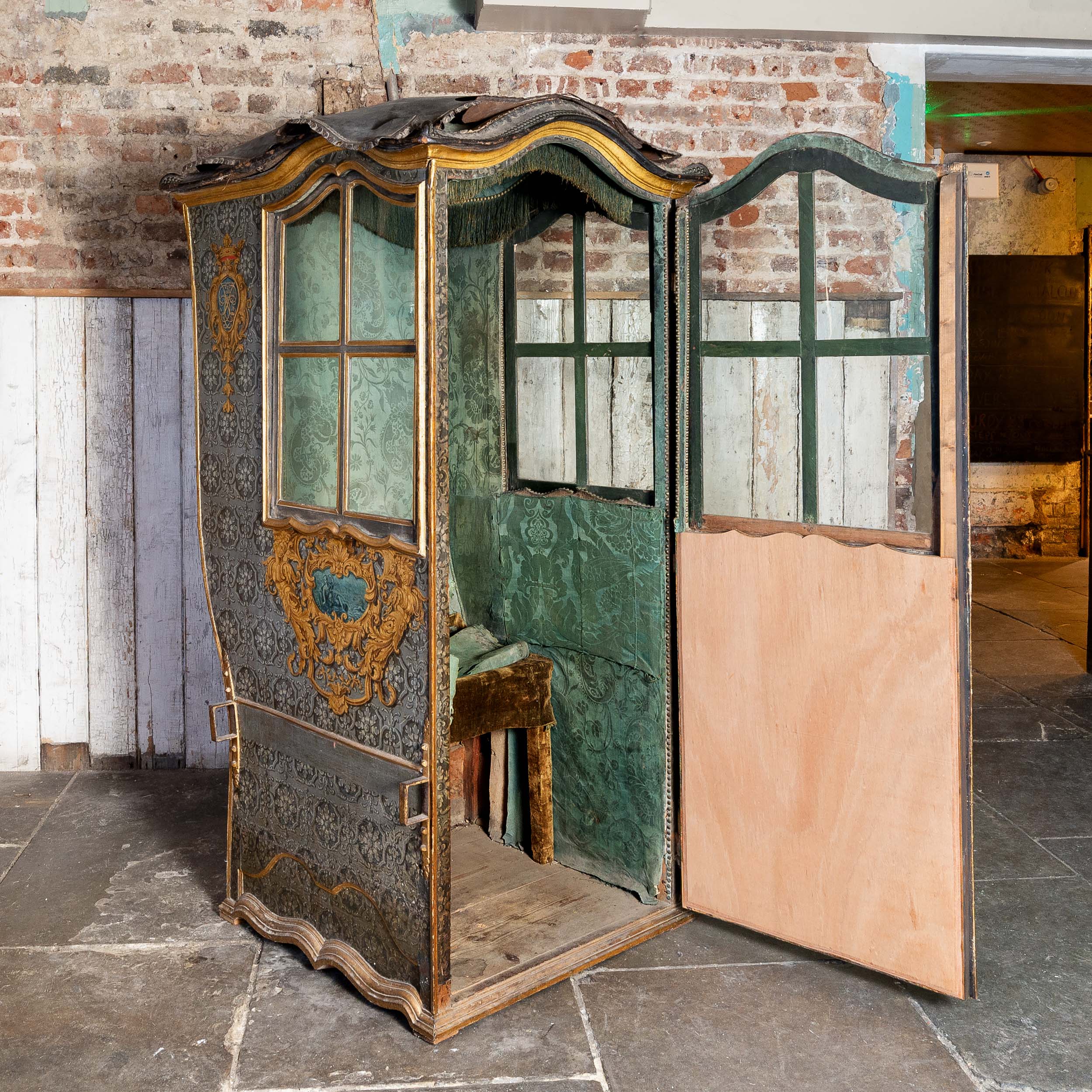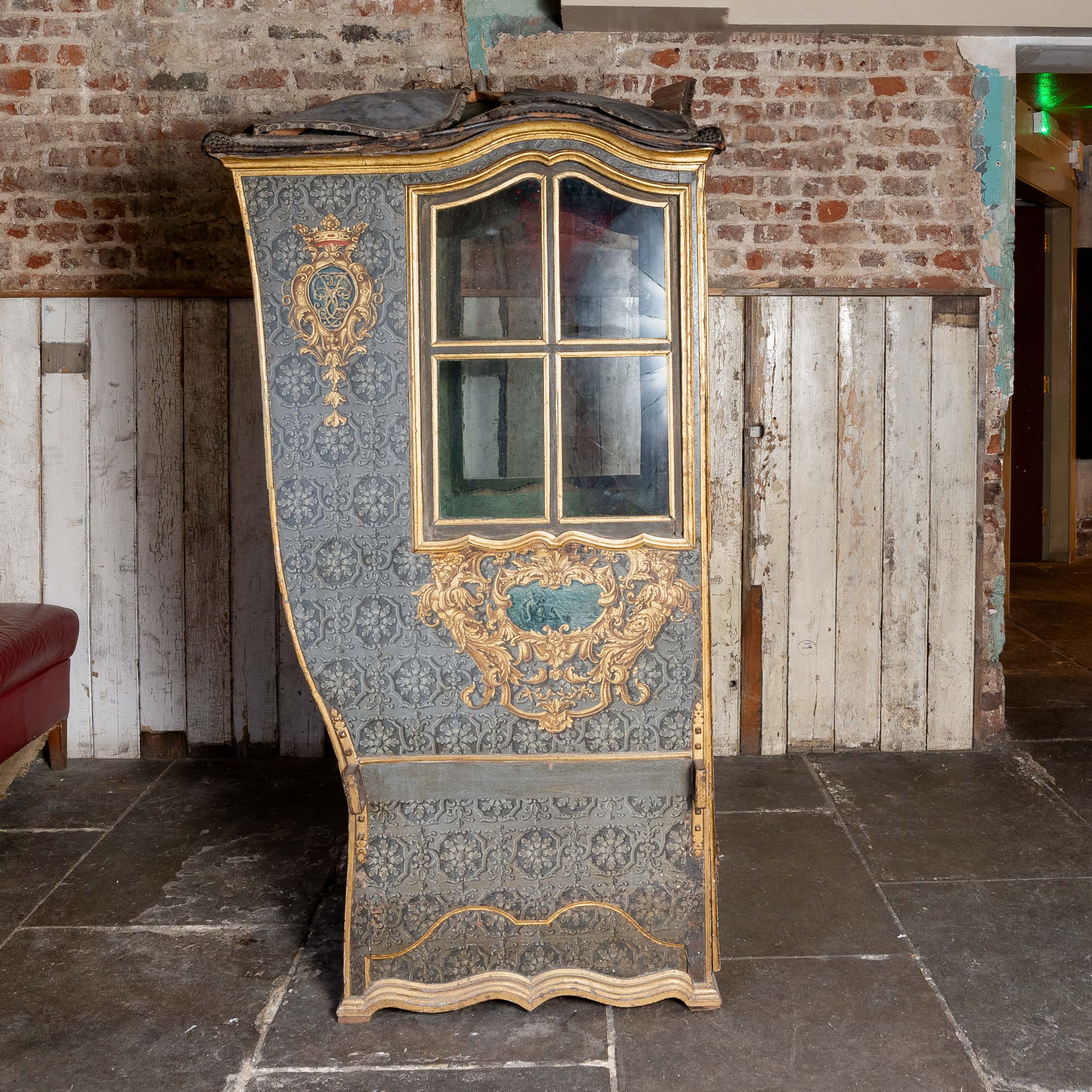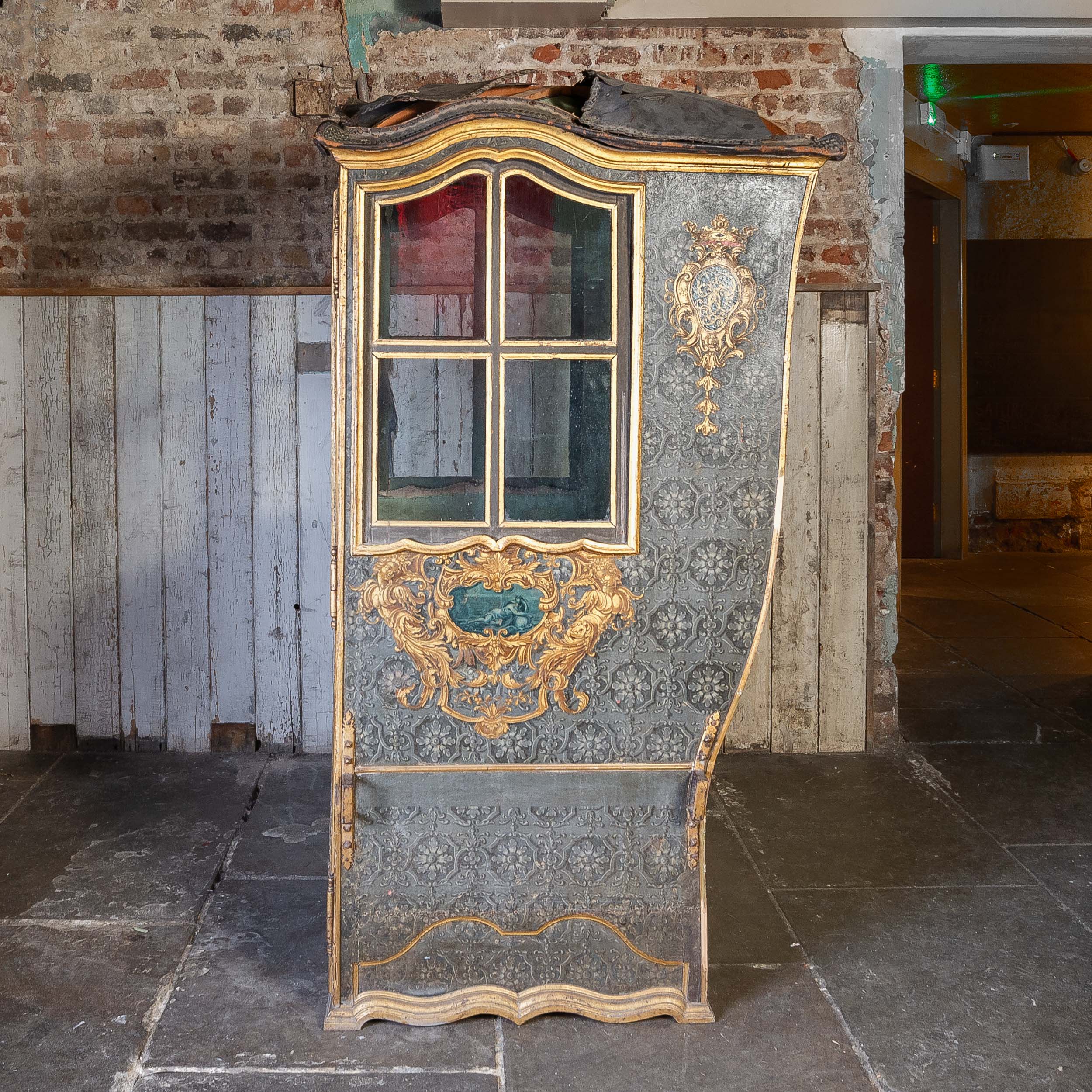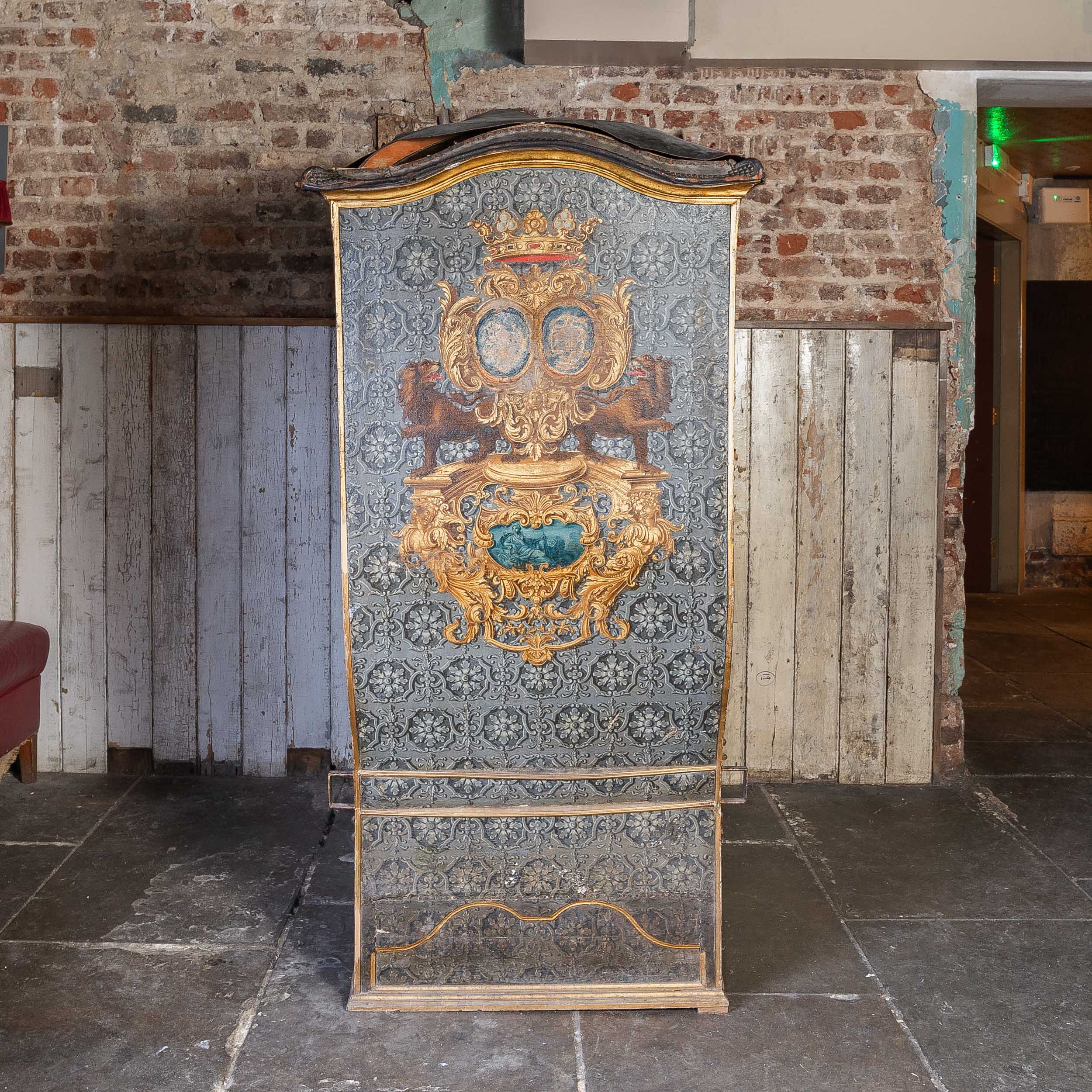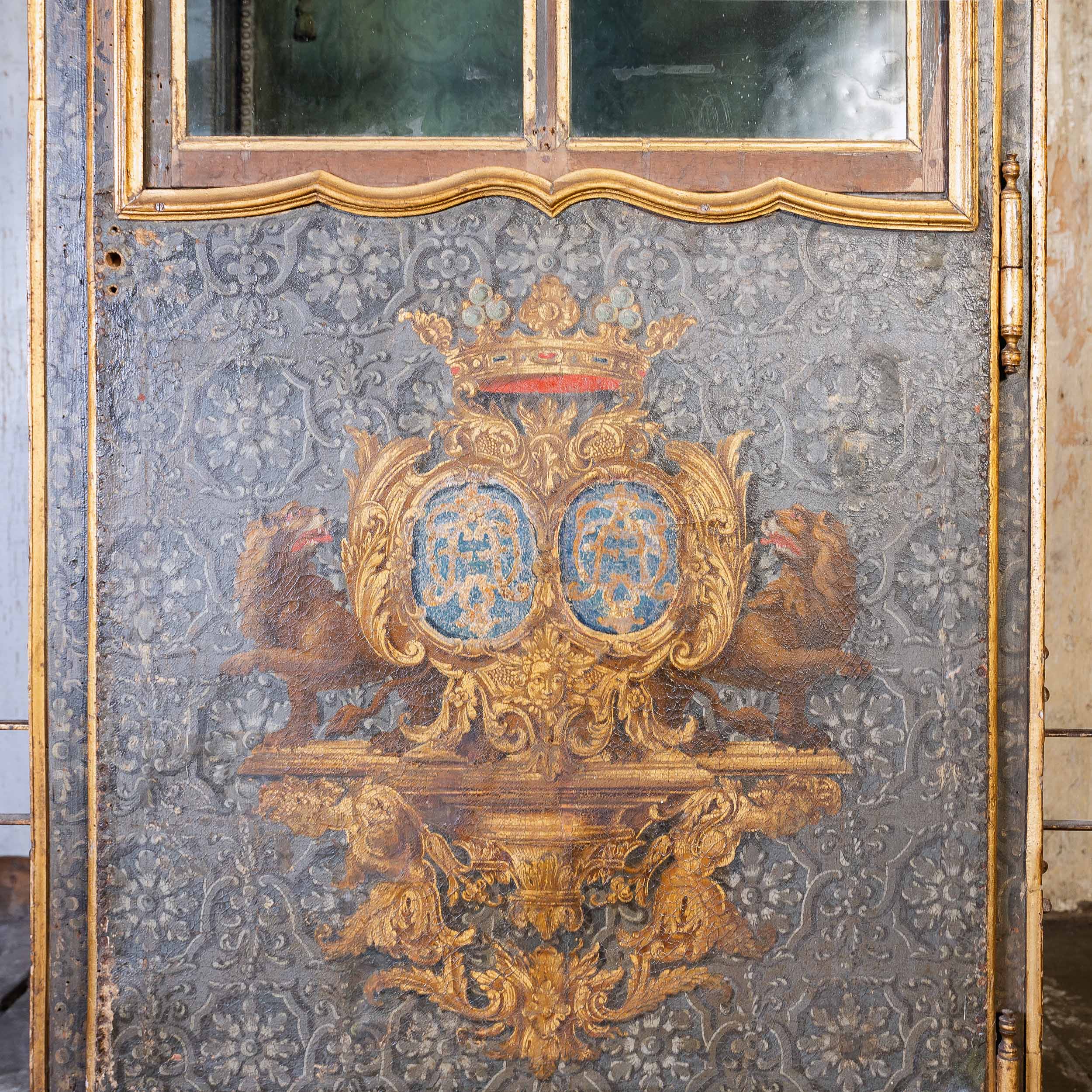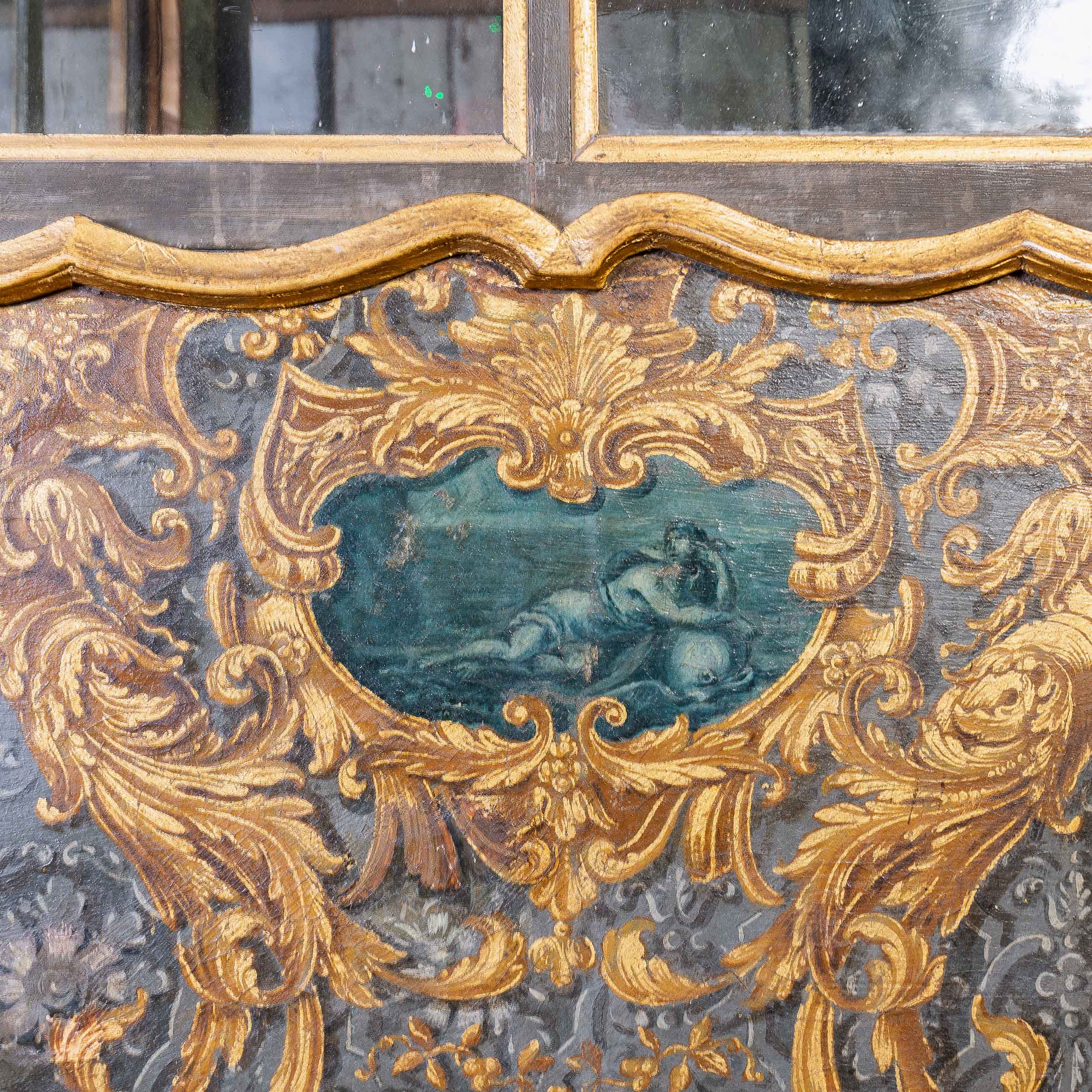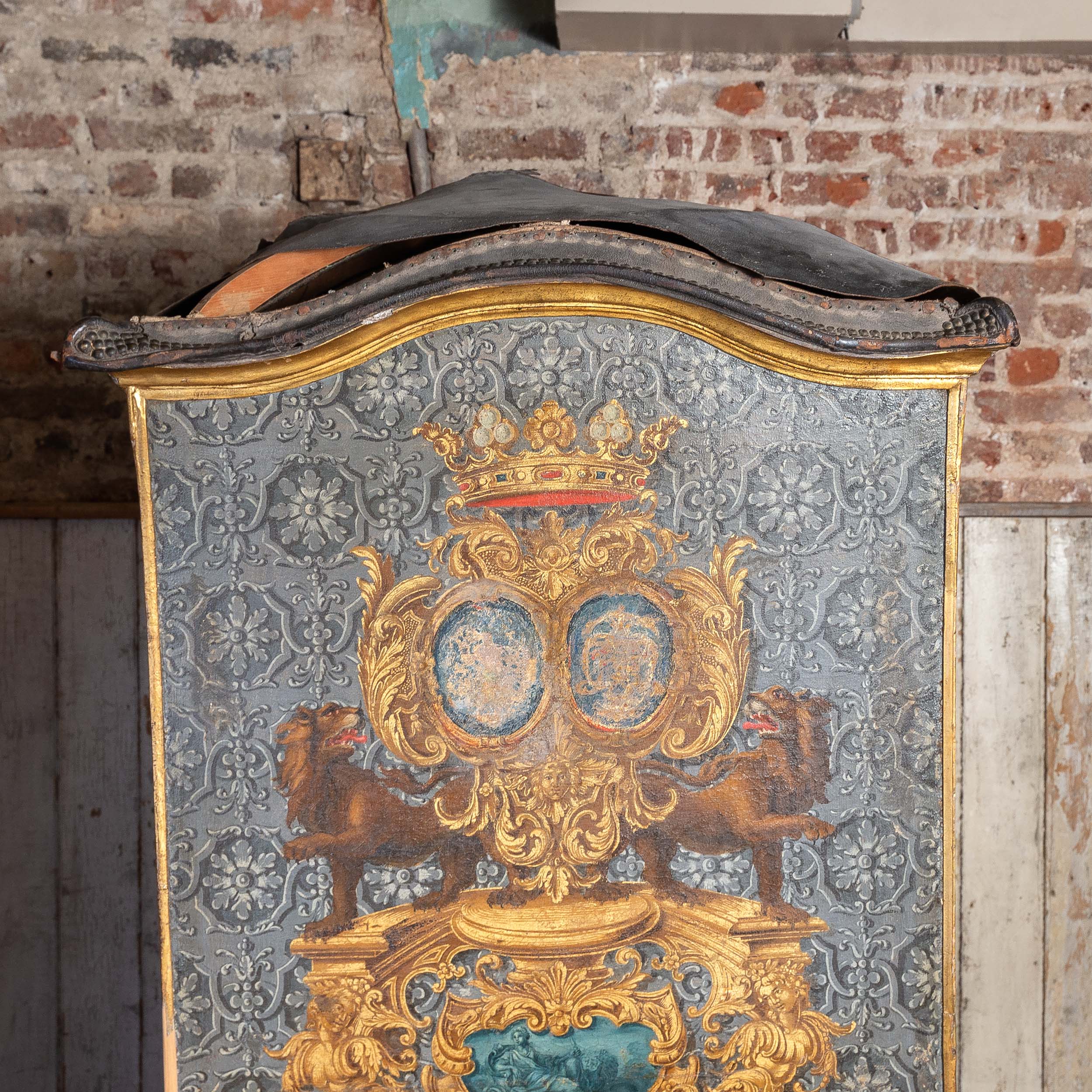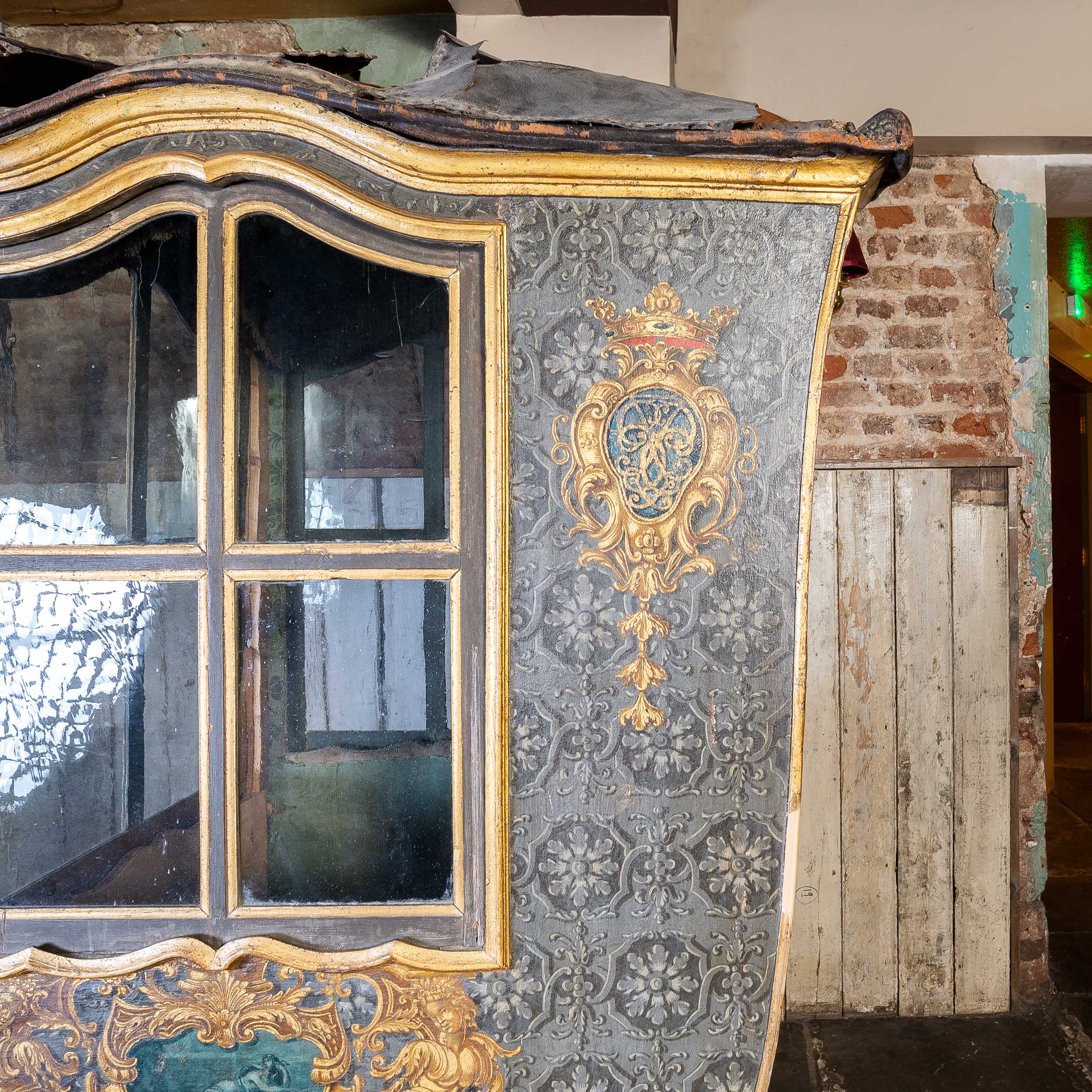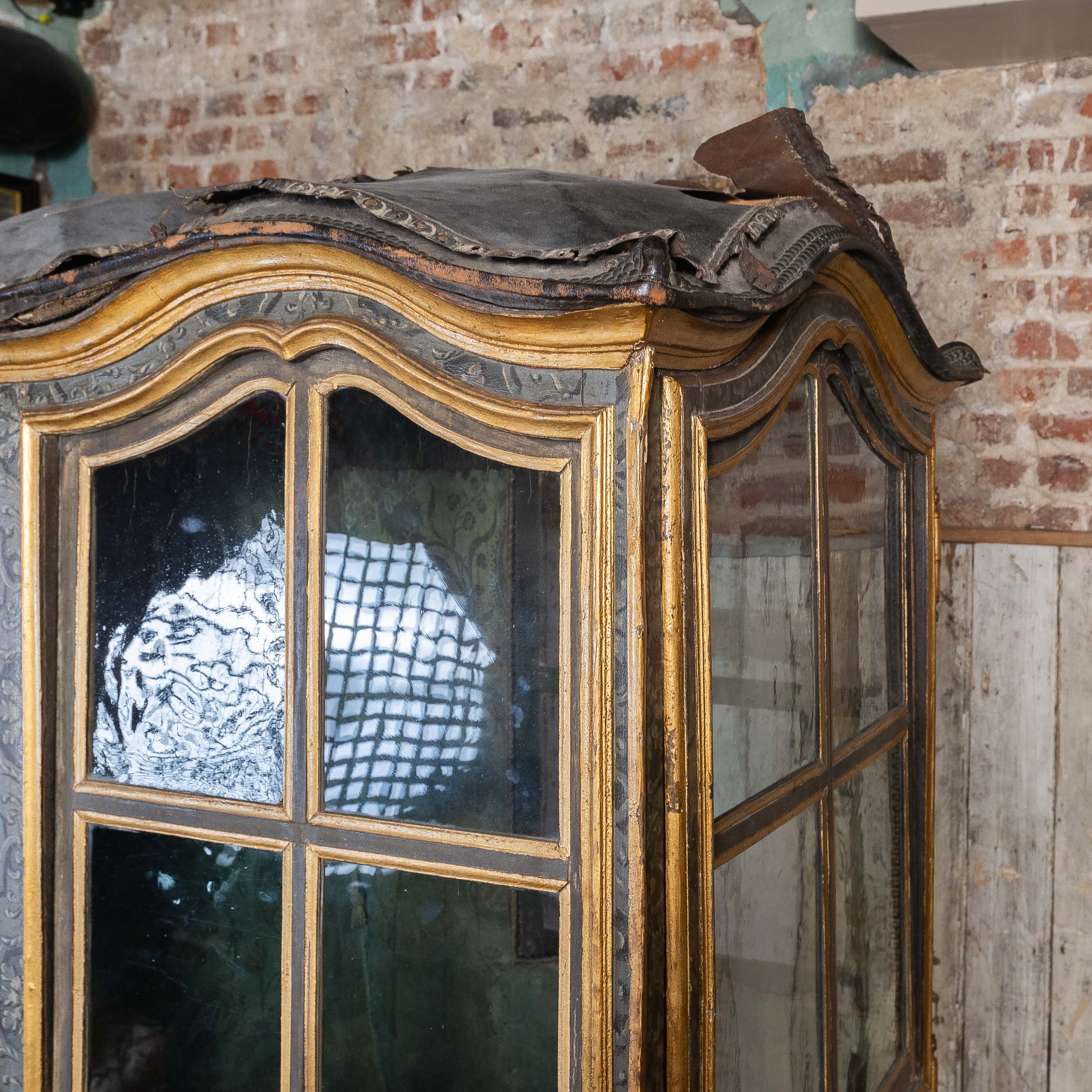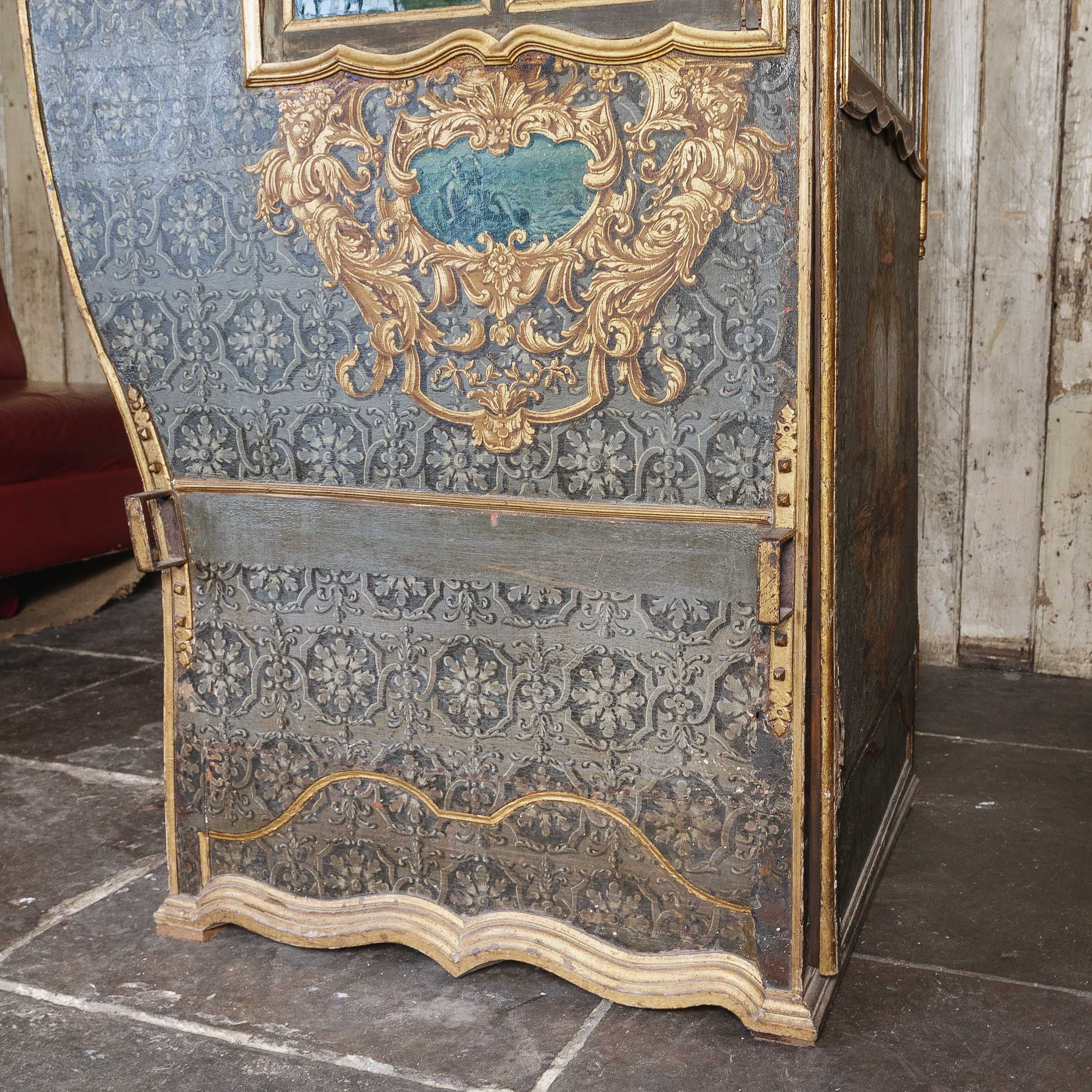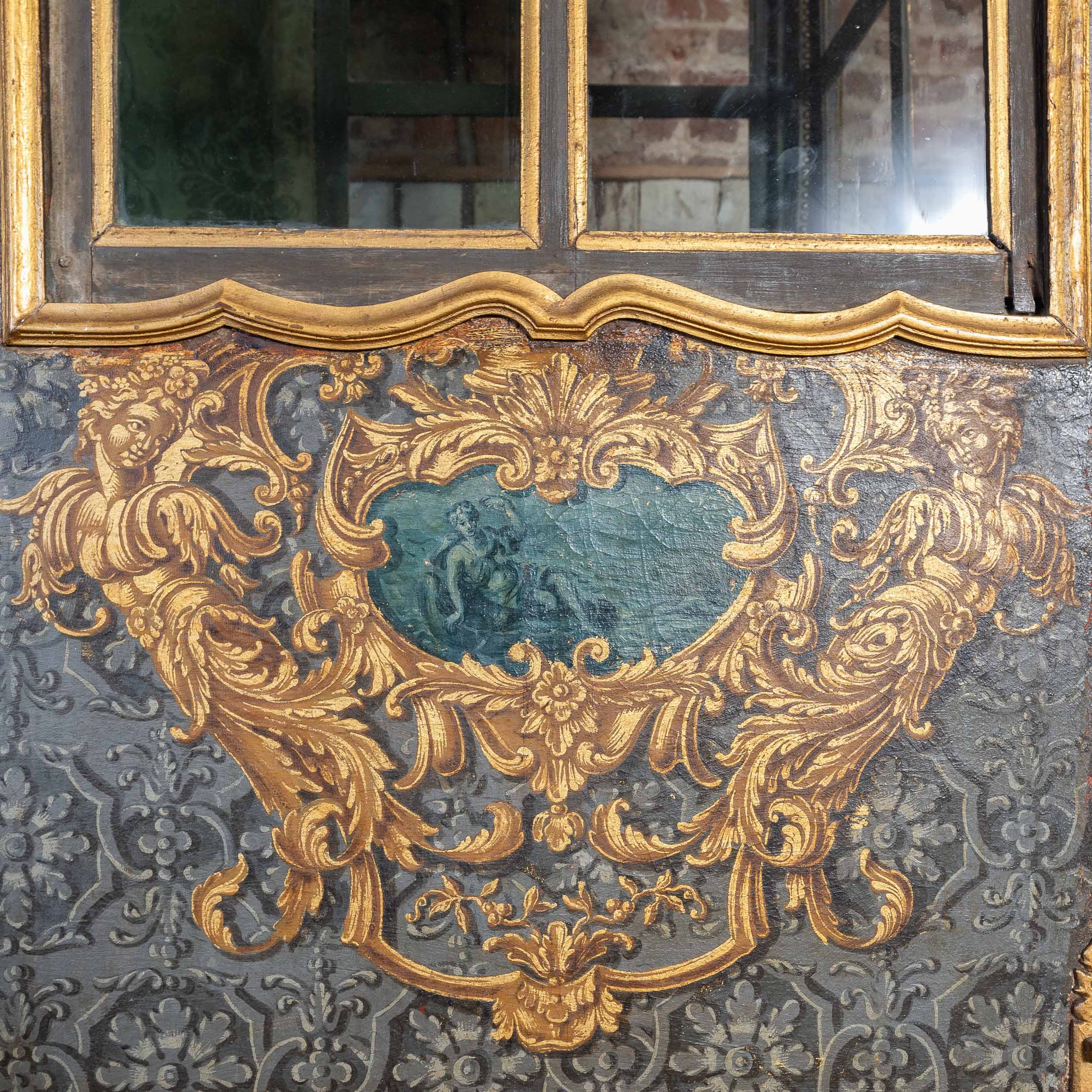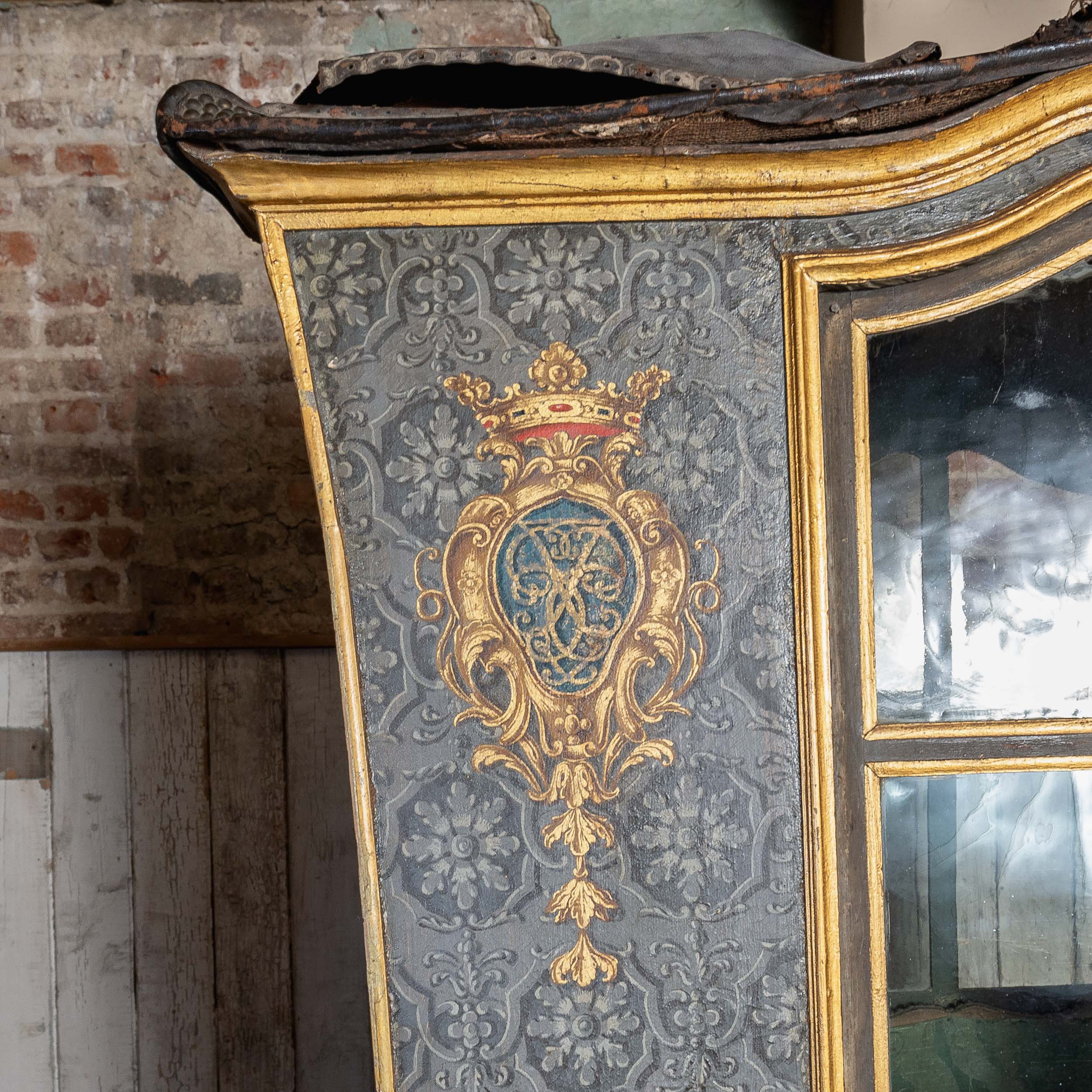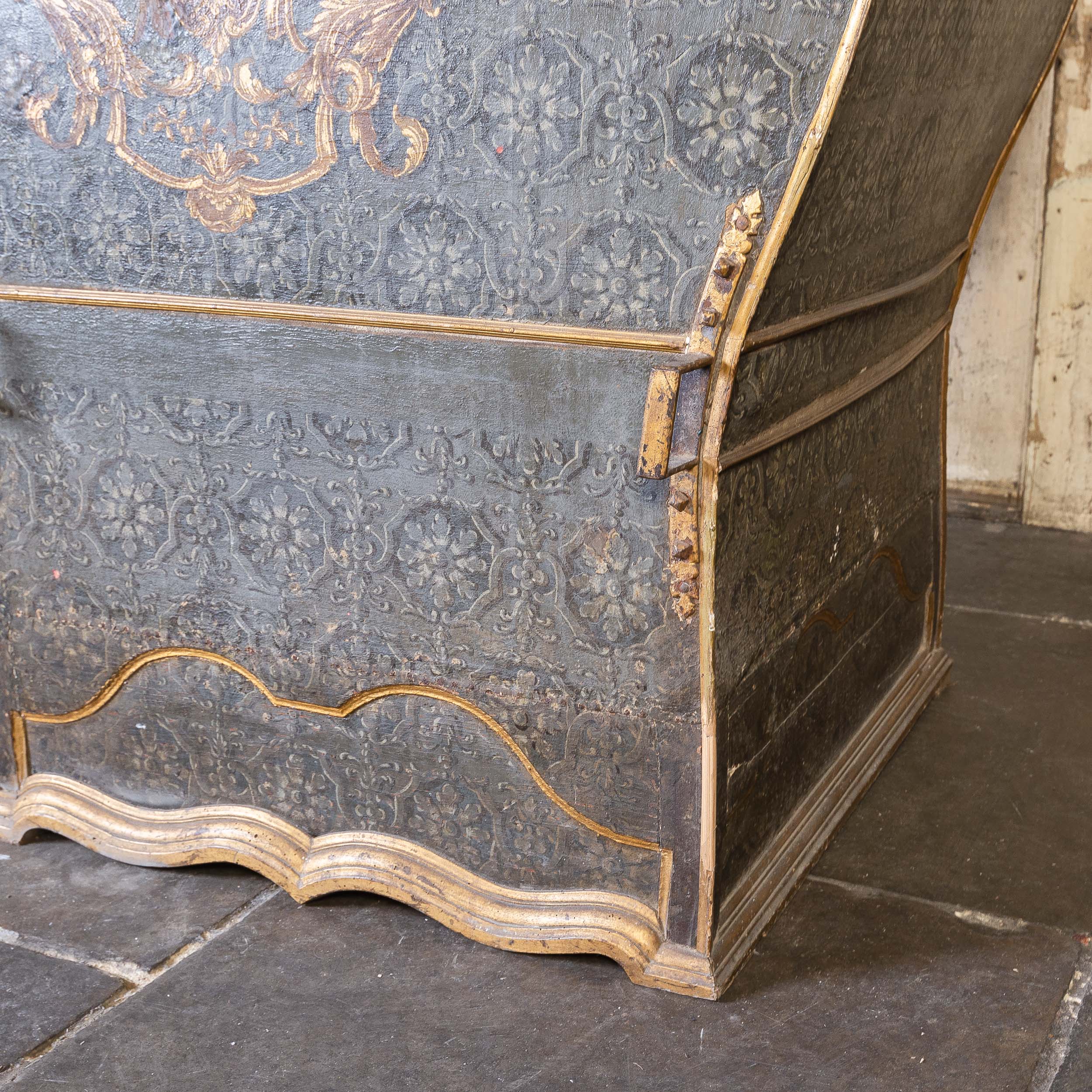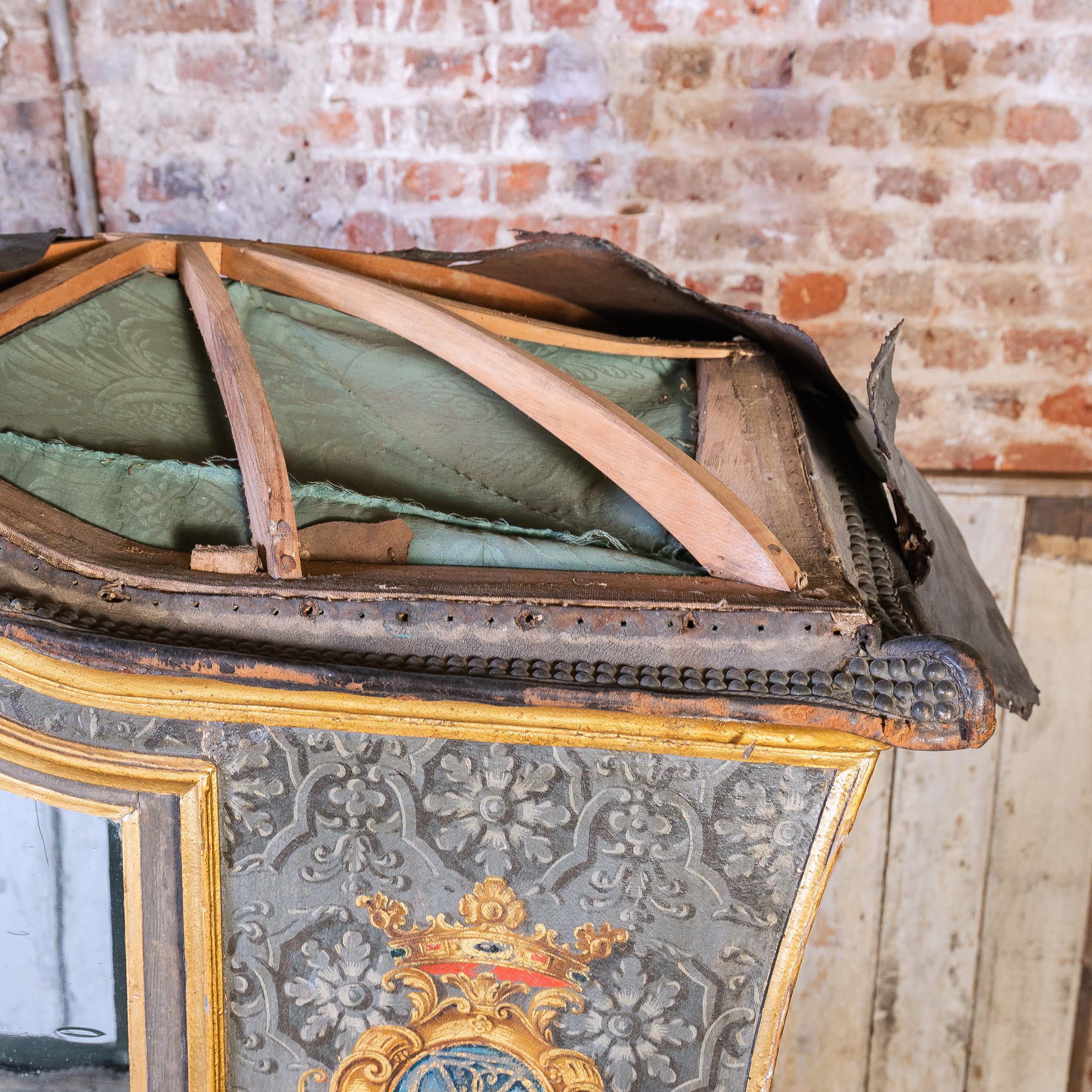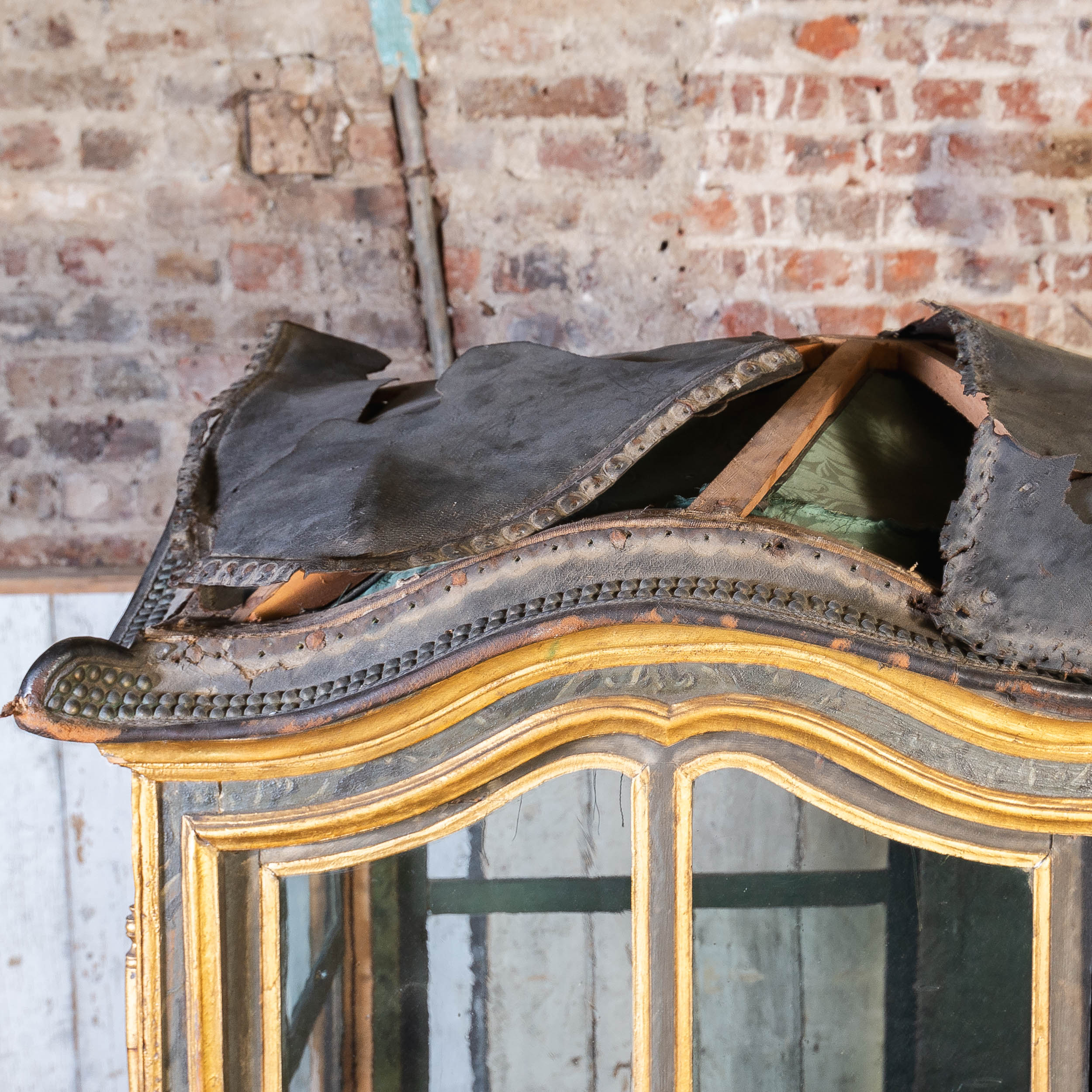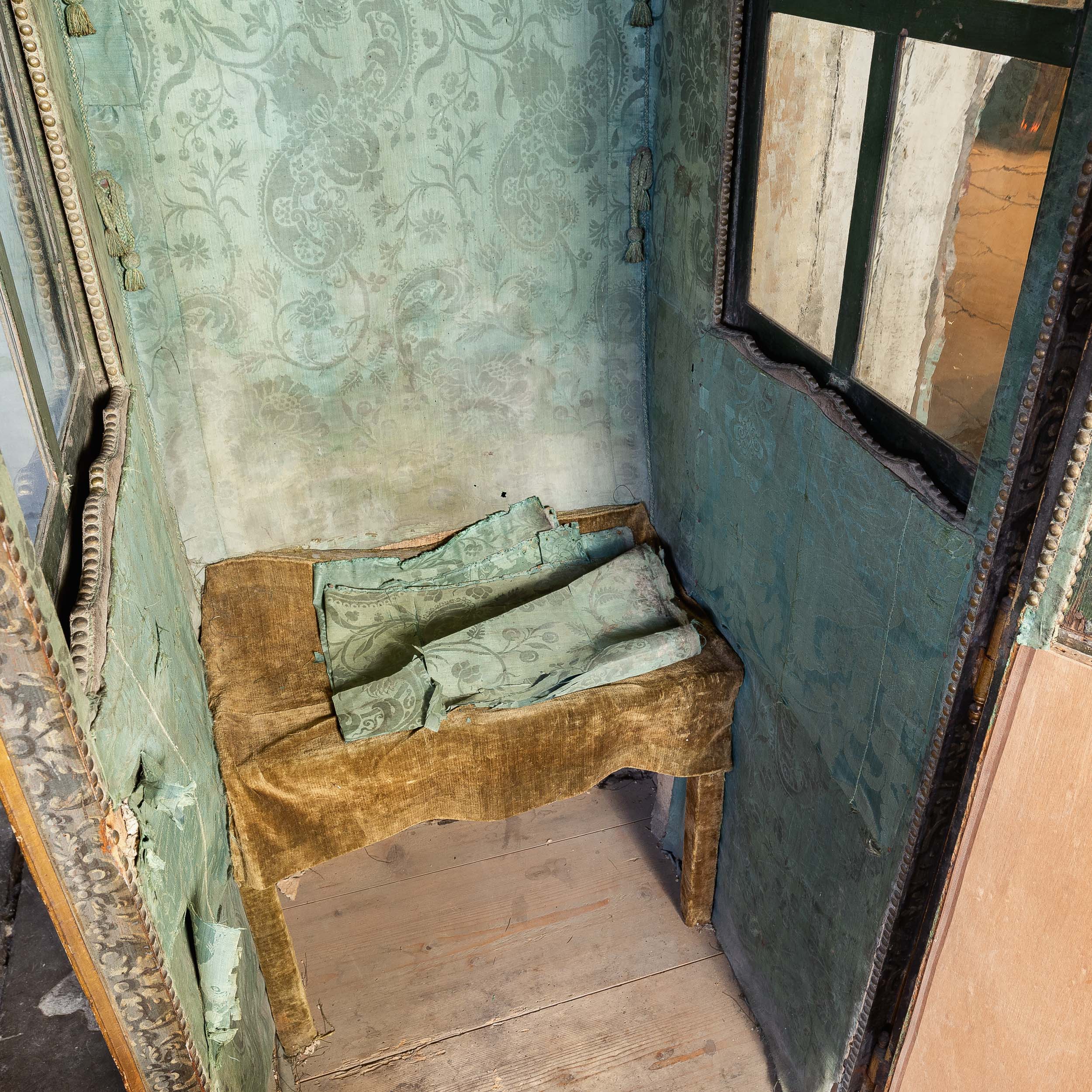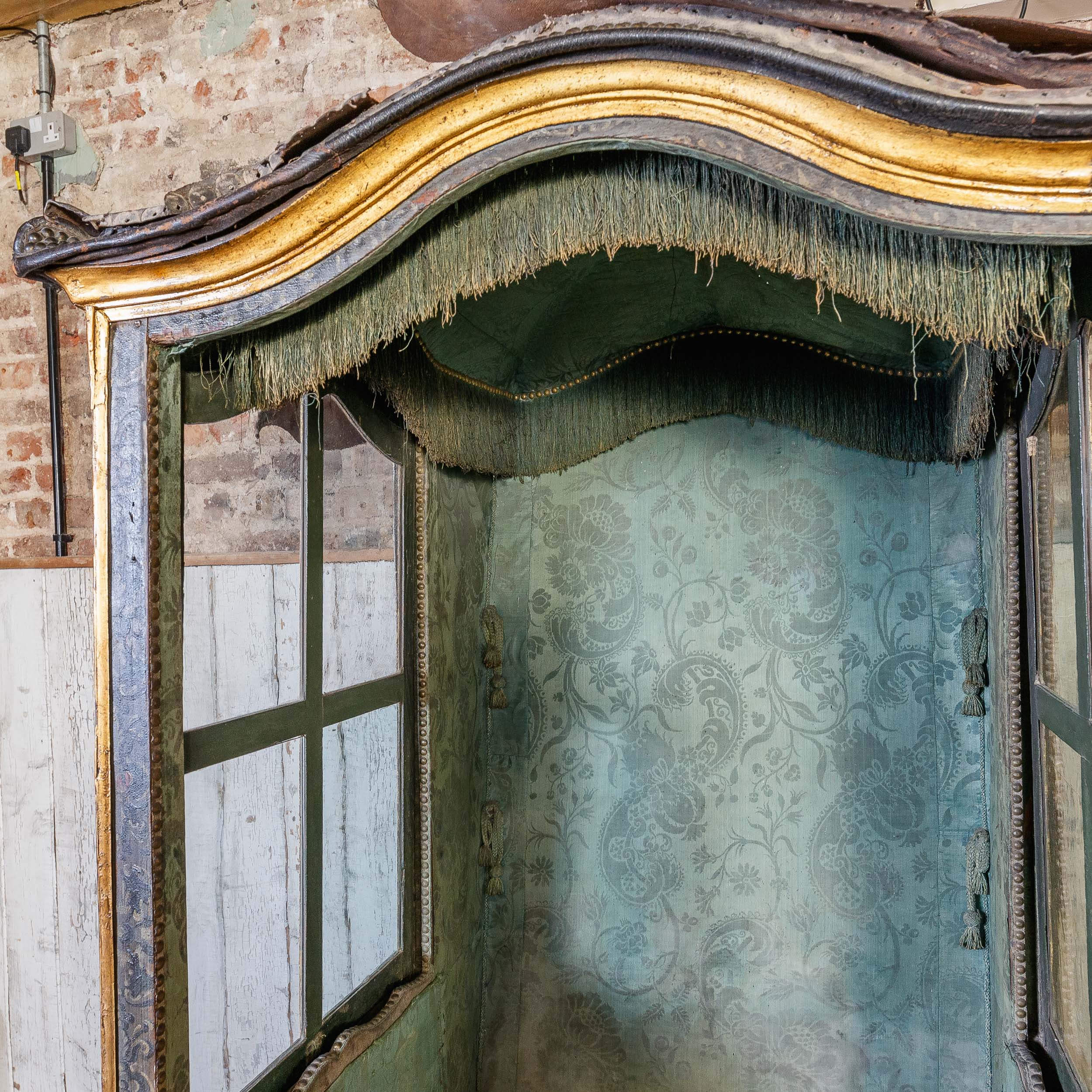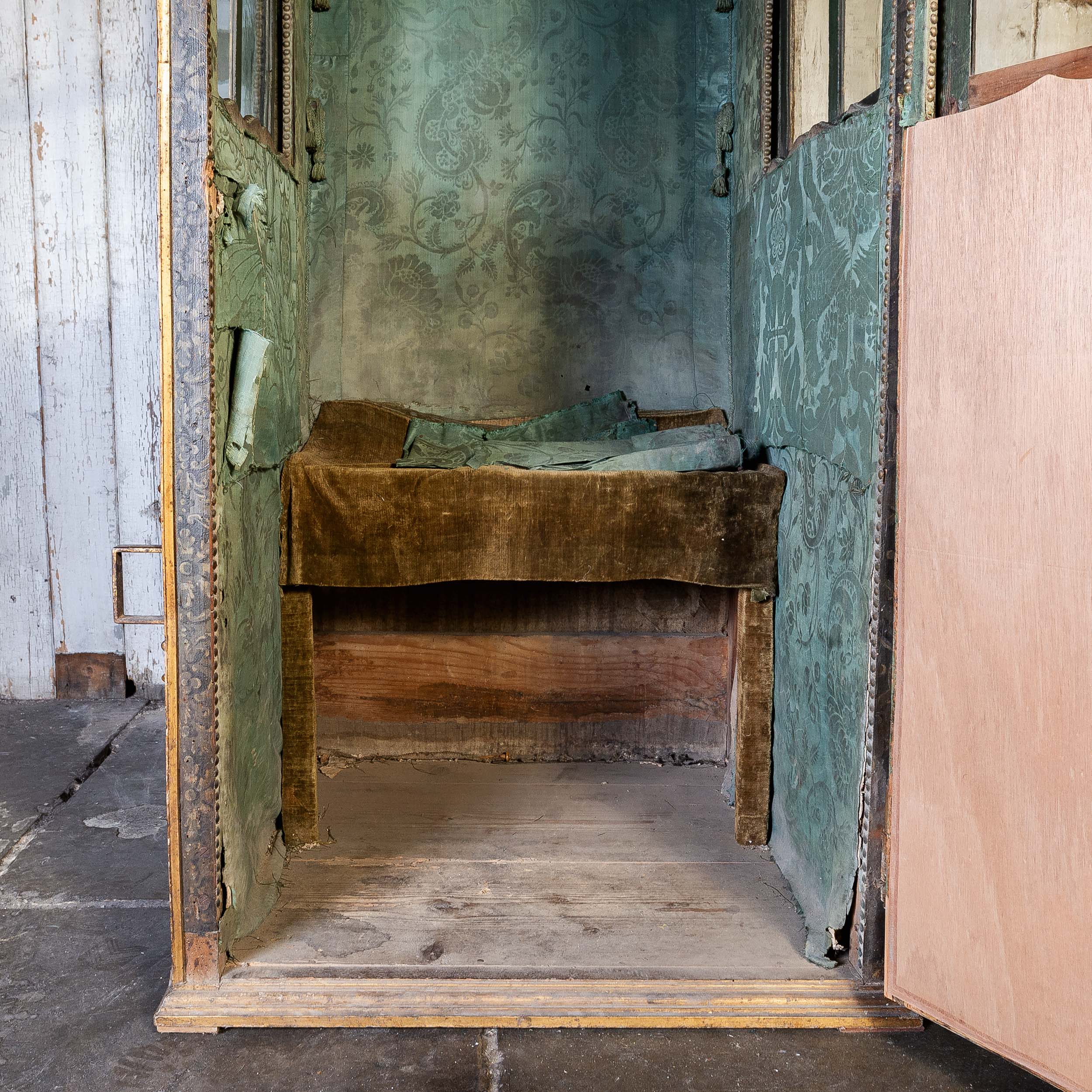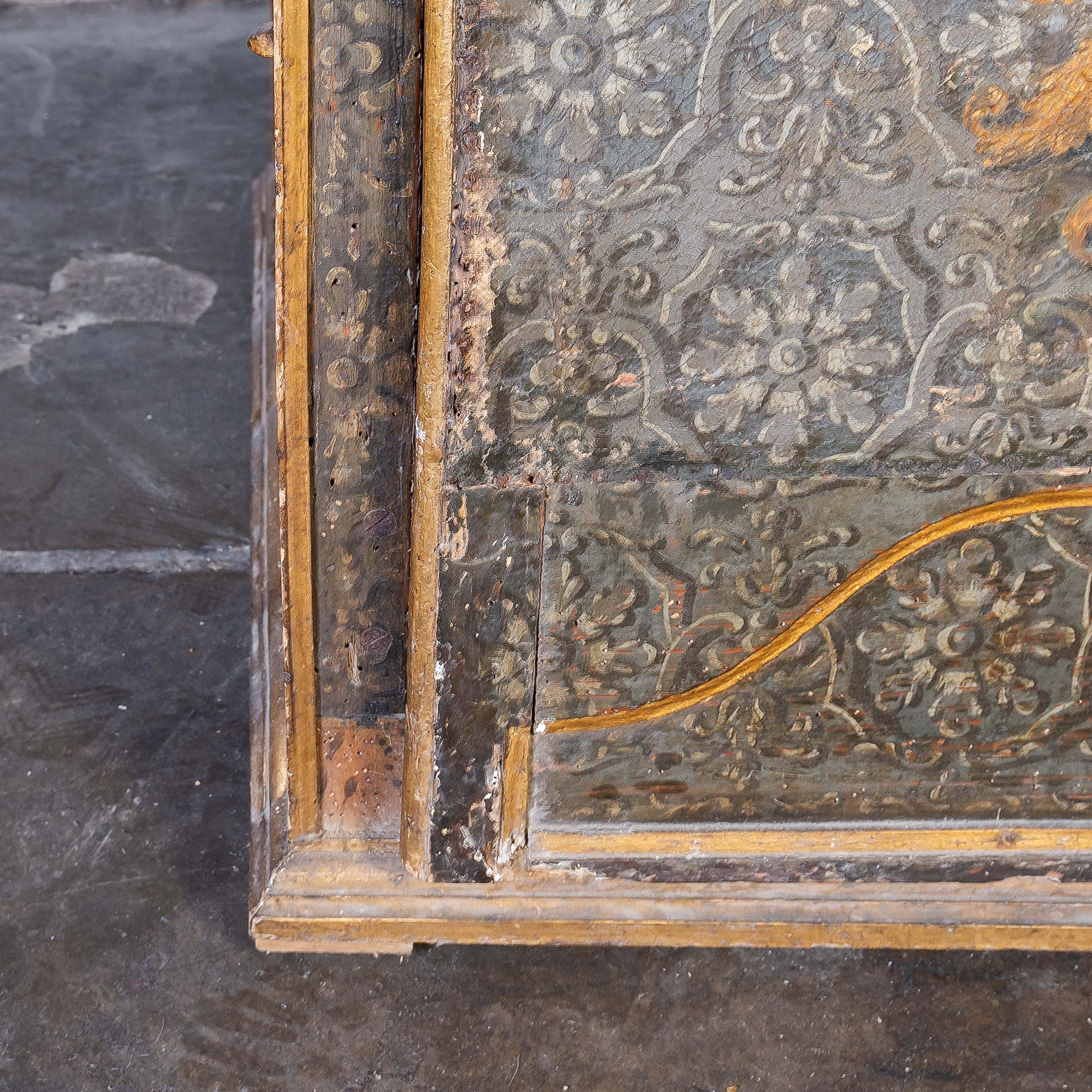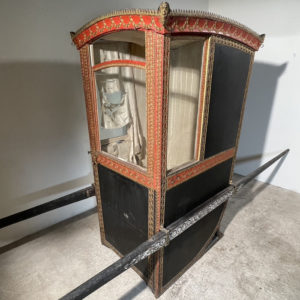Click and Collect – Please contact us to arrange collection or delivery of this item
A rare Avignon Chaise-a-Porteur (sedan chair)
the cabin of deal and canvas construction with a domed roof clad in blacked Moroccan leather with sides, back and door painted in a "grisailles" repeating foliate field, centred with acanthine cartouches incorporating lions, herms and scene paintings, the front door opening to reveal a silk lined interior glazed with quartered drop-sash windows - one to the front and two to the sides; the sedan chair lacking the original the pair of poles - threaded through two hasps on each side,
£9,250
In stock
It may seem a bizarre anachronism today but with 18th Century urban streets cobbled at best, or at worst a thick quagmire of rutted mud, puddles and dung, the gentle-folk with servants, and with fine shoes, stockings, petticoats – and their reputations – to preserve opted to put those servants to use for short trips. They could be carried in a glazed sedan chair shielded from all the ghastly smells, the flies, and the beastly oomsqa underfoot. For all concerned, it was quicker and easier than harnessing the horses for quick trips – and it became a status symbol.
This sedan chair is a rare survivor – and it is a good one. It came from the collection of Stephen Loft-Simson whose research has concluded that only about 1200-1600 chairs survive across Europe and less than 10% of these are in Great Britain. This is one of the earliest known.
Loft-Simson notes that, “In London, the glass-windowed sedans became available for public hire from October 1634 and by the late 18th century more than 2,000 of them were available to hire in over thirty seven cities and towns across Great Britain and Ireland. Ornamentation reached its zenith during the period 1745-1775 when there were tens of thousands in private use across Europe.”
Please contact LASSCO for a condition report.
Recently Viewed Items
-
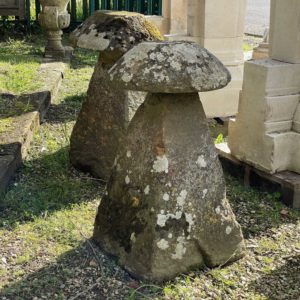
A pair of old English sandstone staddle stones,
£1,400 the pair,A pair of old English sandstone staddle stones,
deep domed tops on tapered square section bases, good weathering and lichen,£1,400 the pair, -
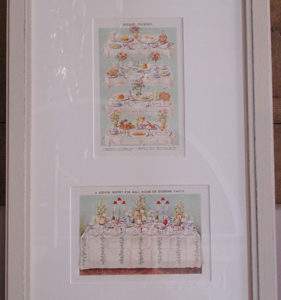
Two Victorian coloured engravings, mounted and framed
-
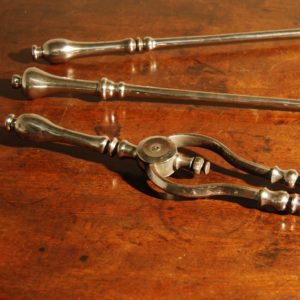
A matched set of steel fire tools
A matched set of steel fire tools
with bulbous handles, the tongs and shovel a matching pair, the poker of a similar but non-matching design, the shovel with a pierced bell shaped blade, some play to the joint,

